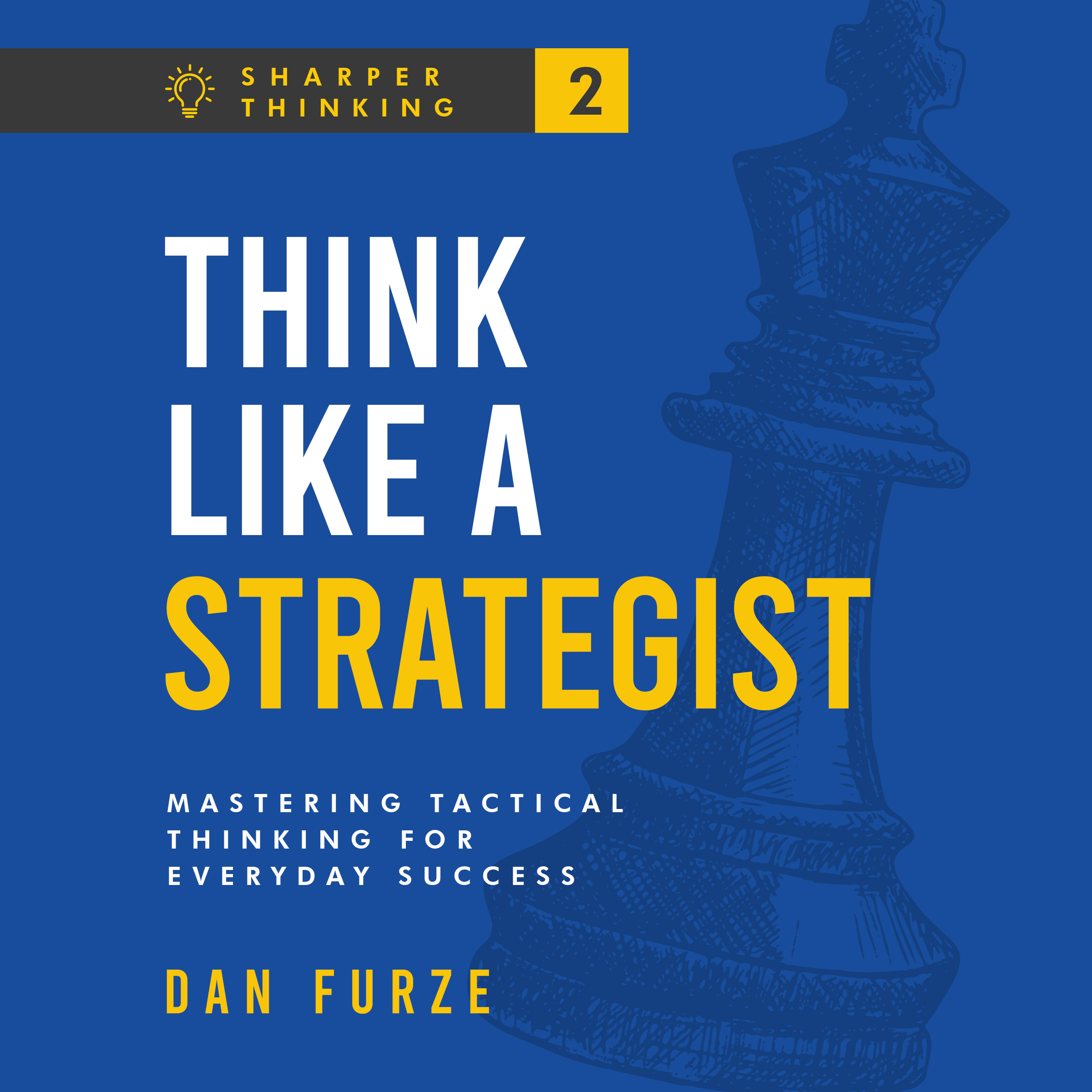
Think Like a Strategist –
The Complete Study Guide
Master Planning, Foresight, and Smart Decision-Making
A step-by-step guide to developing a strategic mindset in business, relationships, and everyday life. Learn how to think several moves ahead, anticipate challenges, and make confident decisions with clarity and purpose.
Strategists don’t just react — they design the path ahead. This guide helps you apply structured thinking, foresight, and adaptability to every decision you make.
This study guide gives you short, practical ways to apply skills from each chapter in your own life as you read through or listen to the book.
Work through one section at a time or dip into whichever area you want to strengthen.
1. The Art of Thinking Ahead
- Map out a current goal as if it were a chessboard — identify three possible moves ahead and what could follow each one.
- List five decisions you’ll need to make this week. Rank them by potential impact on your long-term goals.
- Review a recent plan and note where you got lost in details. How can you reconnect it to the bigger vision?
💭 Where do you naturally think ahead — and where do you tend to react instead?
2. Understanding Others’ Motivations
- Choose one person you work or live with. Write what you believe motivates them — both intrinsic and extrinsic factors.
- Practice ‘strategic empathy’: in a current challenge, outline the situation entirely from the other person’s perspective.
- Identify three key relationships in your life or work. Note how trust and reciprocity could strengthen each one.
💭 How does understanding others’ motives change your strategic choices?
3. Mastering Resource Allocation
- Perform a time audit for two days. Record how you actually spend your hours and compare it to your priorities.
- Use the Eisenhower Matrix to sort your tasks — what can you eliminate, delegate, or delay?
- Batch similar decisions or tasks together to reduce fatigue and increase focus.
💭 What small shift in how you spend time or energy could create the biggest long-term gain?
4. Risk Assessment and Management
- List three potential risks in your current goal or project. For each, note how likely it is and how severe the impact could be.
- Sketch a mini SWOT analysis (Strengths, Weaknesses, Opportunities, Threats) for an upcoming decision.
- Write a short contingency plan for a goal — what would you do if your first option failed?
💭 When have you taken a calculated risk that paid off — and what did you learn from it?
5. Adaptive Strategies for Changing Circumstances
- Recall a time when your plan went off-course. What signs did you miss that could have warned you earlier?
- Set a reminder to review one of your ongoing projects weekly. Ask: ‘Is my strategy still working?’
- Experiment with a small pivot this week — approach one recurring task in a completely new way.
💭 How can you stay flexible without losing your strategic direction?
6. Game Theory in Daily Life
- Reflect on a recent negotiation or disagreement. What were each person’s incentives?
- Identify a situation that felt zero-sum (one wins, one loses). How could you redesign it as a win–win?
- Read about the Prisoner’s Dilemma or Nash Equilibrium, and note one way it applies to your daily interactions.
💭 When do you tend to compete — and when do you collaborate — and why?
7. Scenario Planning and Contingency Plans
- Choose one long-term goal and outline three versions of the future: optimistic, realistic, and challenging.
- Write a backup plan for one critical risk you identified earlier. How can you prepare now for that possibility?
- Once a month, review your plans and note what has changed — and what that teaches you about forecasting.
💭 How can you treat uncertainty as a space for creativity instead of anxiety?
🧭 Final Takeaways
Strategic thinking is not about control — it’s about clarity. When you learn to anticipate outcomes, allocate resources wisely, and adapt with purpose, every decision becomes a deliberate move toward your goals. Keep refining your approach, one thoughtful step at a time.